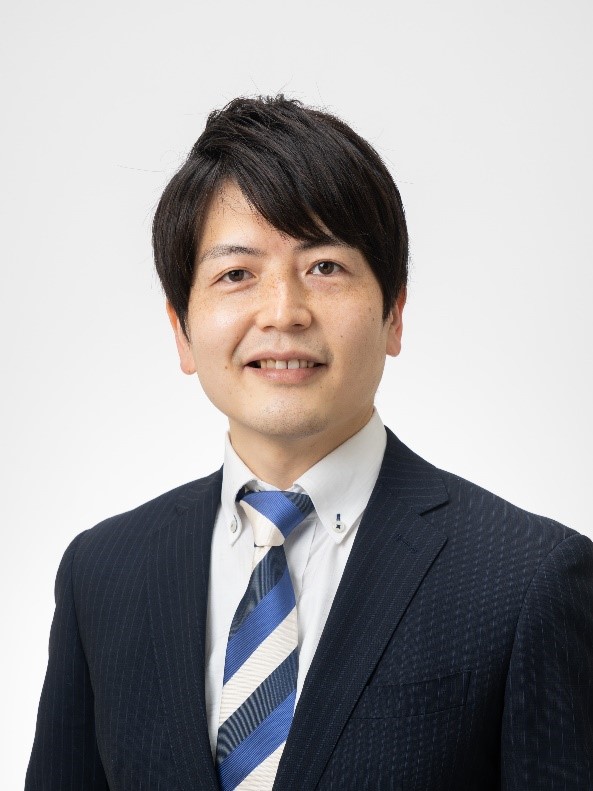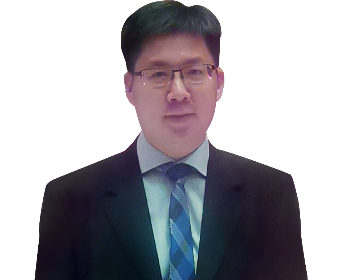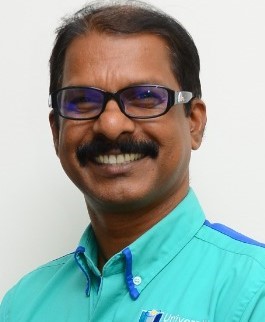Invited Speakers
Prof. Yuanjie Su
School of Optoelectronic Science and Engineering, University of Electronic Science and Technologyof China, ChinaSpeech Title: Piezoelectric Fiber Composites with Polydopamine Interfacial Layer for Self-Powered Wearable Biomonitoring
Abstract: Introduction: As our world is marching into the era of Internet of things, wearable bioelectronics are becoming ubiquitous within our daily lives. Doping polymers with ceramic nanofillers is a widely-adopted routine for developing high-performance nanocomposites. However, the significant modulus mismatch and poor interfacial adhesion between the rigid piezoelectric ceramics and flexible polymers becomes a common challenge in respect to their combined utilization, which dramatically inhibits the stress transfer ability and thus largely undermines the electromechanical coupling efficiency. Herein, a dopamine based interfacial-adherent layer was designed between the inorganic BTO nanofillers and the organic piezoelectric polymer PVDF, aiming at modulating the mechanical strength and electromechanical coupling efficiency of the piezoelectric nanocomposite (Figure 1a-f).

Figure 1a-p: High-performance piezoelectric textiles for wearable physiological monitoring with polydopamine interfacial layer
A phase-field simulation in combination with a detailed experimental investigation was carried out to study the mechanism and functionalities of dopamine as the connection at the inorganic-organic material interfaces (Figure 1i-p). Device fabrication: Surface Modification Using Dopamine: preparing Tris buffer solution (pH 8.5, 10 mm). Then, 100 mg BTO was added and ultrasonically treated for 30 min. Subsequently, 120 mg of DA·HCl was added to the solution and magnetically stirred at room temperature for 24 h to from suspension. During the stirring processes, the surface of the BTO nanoparticle was coated with a PDA layer because of the self-polymerization of DA. Preparation of Sensing Materials: 68 mg of the prepared PDA@BTO nanoparticles was solved into a mixture of DMF (6 mL) and acetone (4 mL). A follow-up ultrasonic treatment was conducted for 20 min to make the nanoparticles evenly dispersed in DMF solvent. Then, 2.25 g of PVDF powder was added to the mixture, followed by magnetic stirring for 2.5 h under a 50 °C water bath. This process facilitates the formation of hydrogen bond, leading to a stable and homogeneous PDA@BTO/PVDF spinning precursor mixed solution. Fabrication of Textile: After the solution was stirred, 30 min ultrasonication was employed to further disperse the nanoparticles. The composite film was obtained by the electrospinning process (Figure 1g). Subsequently, the flexible nanofiber composite film was cut into small pieces of 2.6 cm × 2.3 cm, and two pieces of aluminum tape (1.8 cm × 2 cm) were attached to both sides of the composite film as electrodes to form a “sandwich” configuration. Finally, the device was seal with medical tape (Figure 1h). Results and Conclusions: Both experimental and theoretical results indicated that the introduction of 2.15 vol% polydopamine (PDA) coating on the BTO nanoparticles could remarkably promote the local all-trans conformation and modulus match at the nanofillers-polymer interface, giving rise to the maximum piezoelectric charge coefficient and piezoelectric voltage coefficient as well as mechanical stiffness. Furthermore, the PDA modified electrospun piezoelectric textiles demonstrate high sensitivity and wide pressure sensing range of pressure sensing, revealing an outstanding capability of real-time limb motion detection, facial emotion identification, respiratory monitoring and human-machine interfacing. This work not only sheds light on the fundamental understanding of the interfacial coupling mechanism in piezoelectric nanocomposites, but also endows design strategy for modulating/optimizing piezoelectric wearable electronics.
Dr. Julian David Hunt
International Institute for Applied Systems Analysis, AustriaSpeech Title: Electric Truck Hydropower, a Flexible Solution to Hydropower in Mountainous Regions
Abstract: The world is undergoing a transition to a more sustainable energy sector dominated by renewable energy sources. This paper proposes an innovative solution that consists of catching water from streams at high altitudes to fill storage containers and transport them down a mountain, converting the potential energy of water into electricity with the regenerative braking systems of electric trucks and storing it in the truck's battery. The energy stored in the electric truck can be sold to the grid or used by the truck to transport other goods. Results show that the levelized cost of the electricity truck hydropower (ETH) is 30–100 USD/MWh, which is cheap when compared with conventional hydropower 50–200 USD/MWh. The electricity generation world potential for the technology is estimated to be 1.2 PWh per year, which is equivalent to around 4% of the global energy consumption in 2019. Apart from being a low cost and impact electricity generation technology, electric truck hydropower can operate in combination with solar and wind resources and provide energy storage services to the grid.
Prof. Chongchong Qi
School of Resources and Safety Engineering, Central South University, ChinaSpeech Title: Rapid Identification of Reactivity for the Efficient Recycling of Coal Fly Ash: Hybrid Machine Learning Modeling and Interpretation
Abstract: As the main solid waste produced by coal combustion in thermal plant, the large accumulation of coal fly ash (CFA) causes serious environmental pollution and resource waste. Whether CFA can be recycled depends on its reactivity, which in turns can be represented by its amorphous content. This presentation will introduce a novel methodology for the rapid reactivity identification of CFA. The random forest regression models optimized by artificial bee colony (ABC) were established. The study evaluated the model using correlation coefficient, r-square, root mean square error, and mean absolute error, giving results of testing set of 0.773, 0.477, 6.542, and 5.279. Feature importance and permutation importance were used to measure feature contribution. Partial dependence plots, Shapley additive explanations, and local interpretable model-agnostic explanations were also used to give global and local interpretation of the model performance. The results proved that the established model had good robustness and generalization capability, which can effectively determine the potential of CFA as supplementary cementitious materials to promote the cleaner production of the energy industry.
Dr. Muhammed A. Hassan
Faculty of Engineering, Cairo University, EgyptSpeech Title: Boosting the Thermal Capacitance of Thermally Activated Buildings Using Phase Change Materials
Abstract: One promising technology for reducing the energy consumption of the building sector is radiant heating and cooling, where liquid streams are circulated inside the building mass at relatively lower and higher temperatures (compared to conventional air-based systems) in heating and cooling modes, respectively. A hybrid radiant/air HVAC system comprises the aforementioned hydronic system, alongside a downsized air system for ventilation and management of latent loads. Assuming reliable operation and control, the dual system can drastically improve the energy savings and indoor thermal environment. In modern building envelopes, the lightweight structures have relatively small thermal masses. Hence, phase change materials could be used for increasing the thermal masses, as well as dampening the indoor temperature variations (through periodic melting and solidification) and shifting the peak loads. Despite the lack of studies on the integration of both technologies in the same building system, the limited available studies in the literature demonstrate energy-saving potentials of up to ~50% in both heating and cooling modes. In this presentation, key studies from the literature will be highlighted. Then, the presentation will discuss the main results from the simulations we carried out to investigate the feasibility of this technology for typical offices in the arid desert climate of Egypt, where we achieved energy savings of up to ~18.5%. Finally, side-by-side experimental comparisons between systems with and without phase change materials will be demonstrated.
Assoc. Prof. Takuji Matsumoto
Faculty of Transdisciplinary Sciences for Innovation, Kanazawa University, JapanSpeech Title: Construction of Interpretable GAM-Based PV Forecasts That Outperform the Prediction Accuracy of Machine Learning Methods
Abstract: In recent years, the rapid increase in photovoltaic (PV) power generation worldwide has increased the need for a highly accurate PV power generation forecasting model that is easy to implement for a wide range of electric utilities. Against this background, this study proposes PV generation forecasting models based on the generalized additive model (GAM) and examines their properties from several perspectives, including ease of interpretation and comparison of forecast accuracy with multiple machine learning methods. Specifically, we construct different GAM-based forecast models with respect to regional and individual PV power generations in Japan and confirm the effectiveness of the models by visualizing the estimated trends for their intuitive and rational interpretations. In particular, for the individual PV generation model, a new forecasting model using a 3D tensor product spline is constructed, and it is shown that the robustness and prediction accuracy of the proposed model can be improved by incorporating smoothing conditions in three different directions of season, time, and solar radiation. The prediction performance of each GAM-based model is also compared with popular machine learning (ML) methods such as the k-nearest neighbor, artificial neural networks, support vector regression, and random forests. As a result, the GAM-based models are found to outperform these ML methods in terms of both computational efficiency and prediction accuracy, where the superiority of GAM-based models in prediction accuracy is especially evident when complementing periodic trends. Our empirical results suggest that the GAM-based models, a statistical approach that more easily reflects the modeler's prior knowledge, facilitate more rational and robust model building than the ML methods, which rely more on pattern recognition of data, and can therefore contribute to improving prediction accuracy.
Prof. GuihuaTang
School of Energy and Power Engineering, Xi’an Jiaotong University, ChinaSpeech Title: Enhancing Thermoelectric Properties of Snse Film by Vacancy Effect
Abstract: Nanostructured thermoelectric materials have attracted extensive attention due to the broad application prospects in the fields of micro sensors, electronic thermal management, and wearable devices. In this work, SnSe nanofilms with different thicknesses were prepared by single-target magnetron sputtering technology, annealed in argon atmosphere at 673 K for 30 minutes. The geometric structure, composition and thermoelectric properties were systematically measured. The electrical properties of thin films were measured by the four-point probe method, and the thermal properties of the thin films were measured by the time-domain thermal reflectometry method. The calculation based on the first principle theory was also conducted to understand the carrier transport mechanism in SnSe films. Se vacancies were formed in the 130 nm-thick ultrathin film since Sn atoms were preferentially deposited on the substrate. The theoretical results confirmed that the unbonded Sn2+ can form an intermediate band near the valance band, which reduces the indirect band gap while maintains a relatively large direct band gap over 0.48 eV, achieving band engineering strategy. Additionally, Se vacancies can improve the electrical conductivity significantly by reducing electron-phonon scattering effect. Meanwhile, the thermal conductivity of the vacancy structure has an average reduction of 33.8% compared to the pristine SnSe films due to the vacancy scattering effect. As a result, a high ZT value of 0.61 were achieved at 700 K in the 130 nm-thick film sample, mainly originating from the vacancies formed during the synthesis process, rather than the reduced film thickness. The present work reveals the mechanism of vacancies on energy transfer in thin films, which may promote further optimization and application of nanoscale thermoelectrics.
Dr. Anik Sen
CMDD Lab, Department of Chemistry, GSS, GITAM Deemed to be University, IndiaSpeech Title: A Brief Overview on the in Silico Studies on the Effect of Donors and π-Spacers on Dye Sensitized Solar Cells
Abstract: A world without energy is not a world indeed. Energy is required by every living daily life and its need is also increasing daily. Though we are still dependent on the sources like fossil fuels, natural gas, oils but these sources are limited, and also non-environment friendly, so renewable sources of energy came in light. Solar energy being one of the renewable sources has been one of the primary sources of energy and is highly abundant to capture and use. The solar cells or photovoltaic cells are the electrical device which can capture the solar energy which and convert the light to electrical energy which can be used for daily life. There are different solar based cells like the crystalline silicon based 1st generation solar cells; thin film based solar cells including the amorphous silicon based solar cells as well as the inorganic semiconductor based dye sensitizer solar cells and the very new perovskite cells are well known photovoltaic cells. Dye sensitized solar cells are flexible lightweight, low cost and highly efficient solar cells and are a prime research area. Recently, organic dye sensitized solar cells with a general structure of Donor-pi Spacer-Acceptor (D-π-A) have a very important area of research. A slight change in any part of the donor, spacer or the acceptor may lead to a change in the efficiency of the DSSCs.
Computational modelling has always been at par with the research on the DSSCs. Several studies on how the slight change in the parameters can have an effect on the efficiencies have been studied with Density Functional Theory calculations and the best one have been forwarded for the synthesis for experimental verification. I have been working on this field through in silico modelling in the last few years mainly contributing on both the metal organic and organic dye sensitized solar cells for n-type as well as p-type semiconductors. Here I would like to briefly talk about the effect on the DSSCs for the changes associated with the donors and the pi-spacers for both for n-type and p-type semiconductor based dyes. [1-5]

1. Dharmendra Biswal, Anjali Jha and Anik Sen*, J. Mol. Struct. 2021, 1228, 129776.
2. Anik Sen* and Axel Groβ, J. Phys. Chem. C 2020, 124, 8526-8540.
3. Anik Sen*, Stephan Kupfer, Stefanie Gräfe and Axel Groβ, 2020, J. Physics B: Atomic, Molecular and Optical Physics, 2020, 53, 234001.
4. Anik Sen* and Axel Groβ, ACS Applied Energy Materials, 2019, 2, 6341-6347
5. Anil Kumar Behera and Anik Sen*, J. Photochem. Photobiol. A, 2022, 433, 114146
Prof. Satyabrata Jit
Department of Electronics Engineering, Indian Institute of Technology (BHU), IndiaSpeech Title: ZnO and TiO2 Thin Films Based Low-Cost Hydrogen Sensors
Abstract: Due to limited resources of the natural fossil fuels, hydrogen is projected as an important energy resource for the future generation. However, the problem with the hydrogen gas is that its production, transportation, and use are very risky due to its highly explosive nature. Since hydrogen is a colorless, odorless and tasteless flammable gas, it can’t be detected by human senses. Therefore, a highly efficient hydrogen gas sensor is required to detect and monitor hydrogen concentration in case of any accidental leakage.
In general, metal oxides such as the ZnO and TiO2 are widely used as the active materials for fabricating thin film hydrogen sensors. The present lecture will address the fabrication and characterization of some ZnO and TiO2 thin-film based gas sensors using low-cost techniques such as the sol-gel and vacuum deposition methods. In this regard, the Pd/ZnO based Schottky contact based hydrogen sensors fabricated by thermal evaporation method. Various sensing parameters of the device will be presented. Then TiO2 based metal-oxide-semiconductor (MOS) and metal-semiconductor-metal (MSM) structures will be discussed for the hydrogen gas sensing-applications. Finally, the suitability of the solution processed ZnO quantum dots for hydrogen detection will be presented. Some hydrogen sensors operating at room-temperature or low-temperatures will also be considered.
Dr. Recep Halicioglu
Turkish Machine Theory Association, TurkeySpeech Title: Servo Motor Selection and Energy Saving for Heavy Duty Machine Tools
Abstract: Due to the development of technology in the world, energy consumption is increasing day by day. The decrease in fuel reserves and the damage caused by fuel oil to the environment have also led to the search for new energy sources. In particular, energy consumption in the industry has a large proportion of total energy consumption. In this respect, the design of the machine tools and the selection of the actuators used in them are of great importance. Recycling of braking energy has gained importance in recent years. In this way, great energy savings are achieved through using energy more beneficially. In this study, using two cases, a method for servo motor selection is presented through machine tool examples. With this method, it is aimed to reduce the production cost by providing optimum motor selection. Significant energy saving was achieved by using the capacitor module.
Associate Prof. Dr.-Ing Alhassan salami Tijani
School of Mechanical Engineering, College of Engineering, Universiti Teknologi MARA, MalaysiaSpeech Title: Computational Analysis of Fluid Flow and Convection Heat Transfer Characteristics of Multiple Heat Sink for Electrical Power Stack Cooling
Abstract: Microelectronic devices are increasingly becoming miniaturized, especially in the semiconductor industry. The miniaturization of these Microelectronic technologies has significantly increased their power density. To meet the goals of achieving iindustrial revolution (IR 4.0), most manufacturing companies such as power transformers, battery banks of electric vehicles, CPU, industrial inverters and electronic circuit boards are continuously shifting towards downsizing. Thermal energy dissipation is the main challenge limiting these microelectronics’ reliability and efficiency. In this research work, cooling performance of new design overlap heat sinks was investigated, two different designs were simulated using ANSYS FLUENT. Design 1 is a heat sink with trapezoidal fillet and symmetrical half-round pins in horizontal arrangement. Design 2 is a heat sink with half parabolic fillet and symmetrical half-round pins in a horizontal arrangement. Each design consists of 0% overlap ratio (non-overlap), 50% overlap ratio (partial-overlap) and 100% overlap ratio (fully-overlap). The accuracy of the results of this study was validated with experimental data. The findings from this study make several contributions to the current literature through heat transfer enhancement and electrical power stack space minimization. The results show that the partial overlap design has the highest Nusseslt number, followed by non-overlap and fully-overlap heatsink. At a velocity of 2m/s, the performance for non-overlap, partial overlap and fully overlap are 0.45, 0.25 and 0.15, respectively. The deterioration of the performance was due to increase in pressure drop penalty. Design 1 with fully overlap has about 30 % increase in pressure drop compared with design 2. Interestingly the heat transfer coefficient of partial overlap design (Design 1) is about 12W/m2.K which is about 36.6 % increase in heat transfer coefficient. In terms of space minimization, the fully overlap heat sink can be applied in minimizing electrical stack cabinet space, however for heat transfer characteristics, the partial overlap heat sink has a better performance.

Prof. Jose Rajan
Center for Advanced Intelligent Materials, Faculty of Industrial Sciences & Technology, Universiti Malaysia Pahang, MalaysiaSpeech Title: Sustainable Materials for Energy Storage Industry
Abstract: Emergence of sustainability as the new normal and consequent concerns over material sustainability for various industrial sectors accelerated materials discovery process from renewable sources. Energy storage become one of the dominant industries currently and most of the high performing energy storage devices such as lithium-ion batteries use expensive mined materials as electrodes with enormous processing and value addition. Biomass derived carbon has been suggested as a possible material for energy storage, however, they mainly suffer from lower performance indicators. We have explored augmenting properties of biomass carbon with small amounts (~5 – 10 wt.%) of metals or metal oxides to enhance the charge storage parameters in lithium-ion capacitors, battery–supercapacitor hybrids, and electrochemical capacitor storage modes besides developing eco-friendly and green routes for their processing using physical means than chemical methods. Four strategies were adopted: (i) enhancing the charge storage sites by filling large voids in porous carbon by hierarchical 3D nanoflowers or composite nanostructures, (ii) developing a thin metal oxide film over porous carbon surface through a simultaneous activation and coating process, (iii) developing a thin metal film over porous carbon, and (iv) green reduction of graphene oxide to reduced graphene oxide by means of physical methods than chemical ways. Several advanced carbon structures are thereby synthesized; in supercapacitive charge storage mode they gave charge storability of ~60% of lithium battery and ~10 times more power capability than lithium battery. Only 10% metal compositions could boost up the energy storage capabilities dramatically. Promising green processing routes are also developed which avoid large scale toxic chemicals for developing advanced materials.
To be updated…











